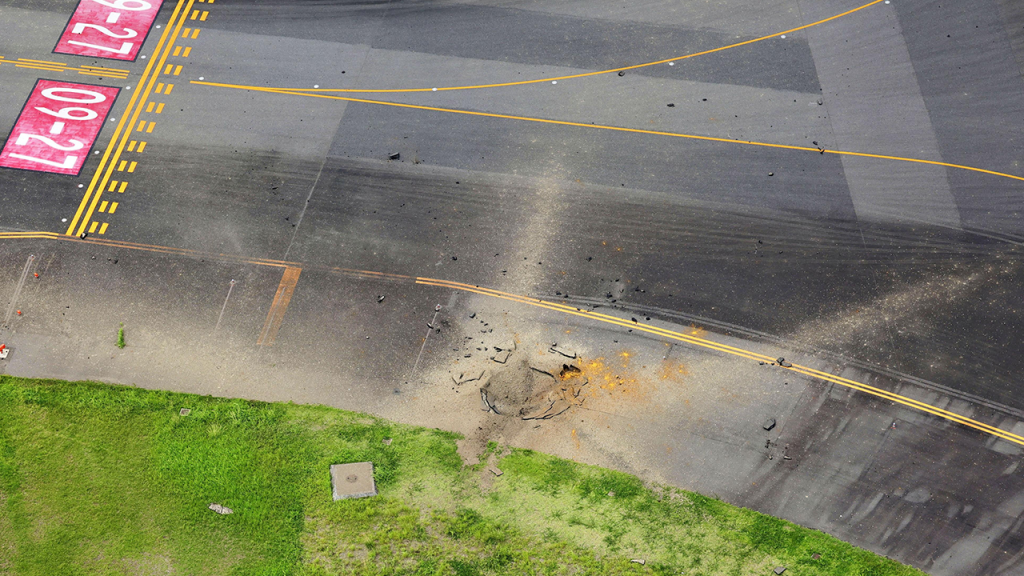A World War II-era American bomb buried beneath Miyazaki Airport in Japan exploded, creating a crater in a busy taxiway and leading to the cancellation of over 80 flights. The bomb was a 500-pound relic from WWII, and its sudden detonation remains unexplained. Fortunately, no injuries were reported as the explosion occurred when there were no aircraft nearby. Miyazaki Airport, originally built in 1943 as a former Imperial Japanese Navy flight training field, has a history of hosting kamikaze pilots who carried out suicide attack missions.
The blast from the exploding bomb sent pieces of asphalt flying into the air like a fountain, according to a video recorded by a nearby aviation school. The impact created a crater in the taxiway that was roughly 20 feet in diameter and 3 feet deep. Chief Cabinet Secretary Yoshimasa Hayashi stated that the airport aimed to resume operations the following morning in the wake of the explosions. However, it is unclear why the bomb detonated after being buried for so many years, as several unexploded bombs dropped by the U.S. military during WWII have been found in the area.
The incident at Miyazaki Airport underscores the ongoing issue of unexploded bombs from World War II that still remain buried throughout Japan. Defense Ministry officials have pointed out that hundreds of tons of unexploded bombs from the war are still hidden underground and are occasionally unearthed during construction projects. Even though many of these bombs have lain dormant for decades, they can still pose a significant threat when they unexpectedly detonate. The discovery of these bombs serves as a reminder of the enduring impact of WWII on Japan’s landscape.
It is a harrowing reminder of Japan’s wartime history and the lasting impact of WWII on the country. The presence of unexploded bombs from the era continues to be a potential threat as they can cause devastation when they are accidentally triggered. The explosion at Miyazaki Airport highlights the ongoing danger posed by these remnants of the past. Despite efforts to locate and safely dispose of unexploded ordnance, the sheer volume of bombs remaining buried in Japan presents a formidable challenge that requires constant vigilance to prevent further incidents.
As a former Imperial Japanese Navy flight training field where kamikaze pilots once took off on suicide missions, Miyazaki Airport has a poignant connection to Japan’s wartime past. The explosion of the WWII-era bomb beneath the airport serves as a stark reminder of the country’s history and the lasting scars left by the conflict. In the aftermath of the blast, authorities worked to ensure the safety of those at the airport and minimize the disruption caused by the cancellation of flights. The incident also serves as a cautionary tale about the importance of continued efforts to locate and safely neutralize unexploded bombs from World War II in order to prevent similar incidents in the future.
Overall, the explosion of the WWII-era bomb at Miyazaki Airport highlights the ongoing presence of unexploded ordnance from the war in Japan and the potential dangers they still pose. The incident underscores the need for continued vigilance and efforts to safely dispose of these bombs in order to prevent accidents and ensure the safety of the public. It also serves as a poignant reminder of the lasting impact of World War II on Japan and the challenges that remain in dealing with the legacy of the conflict.


